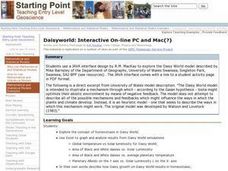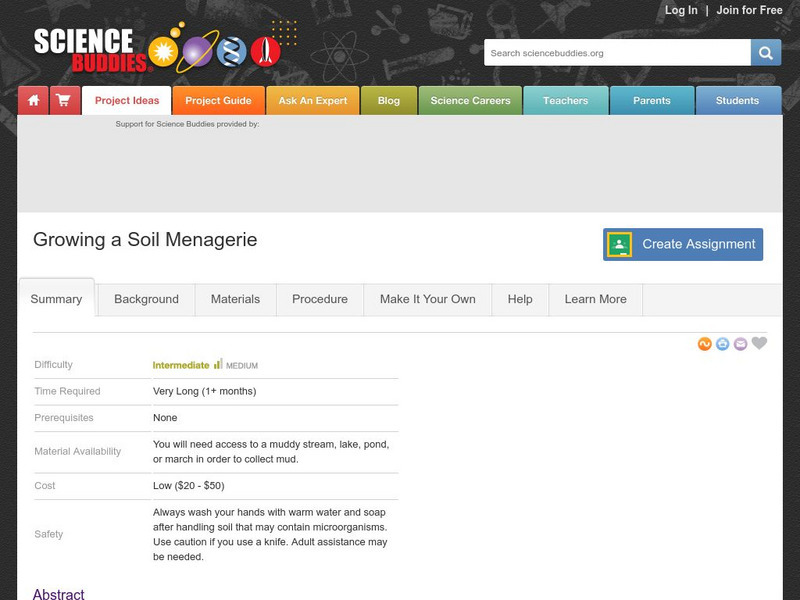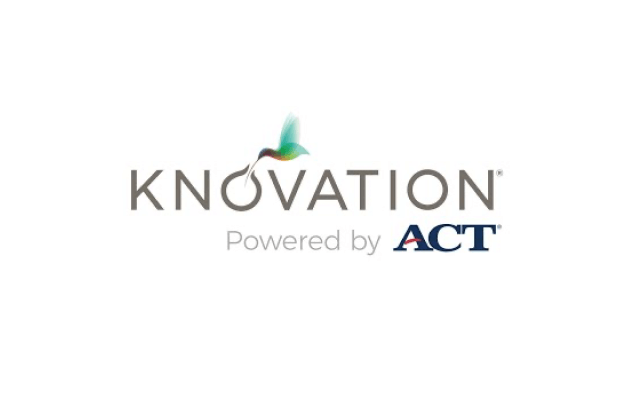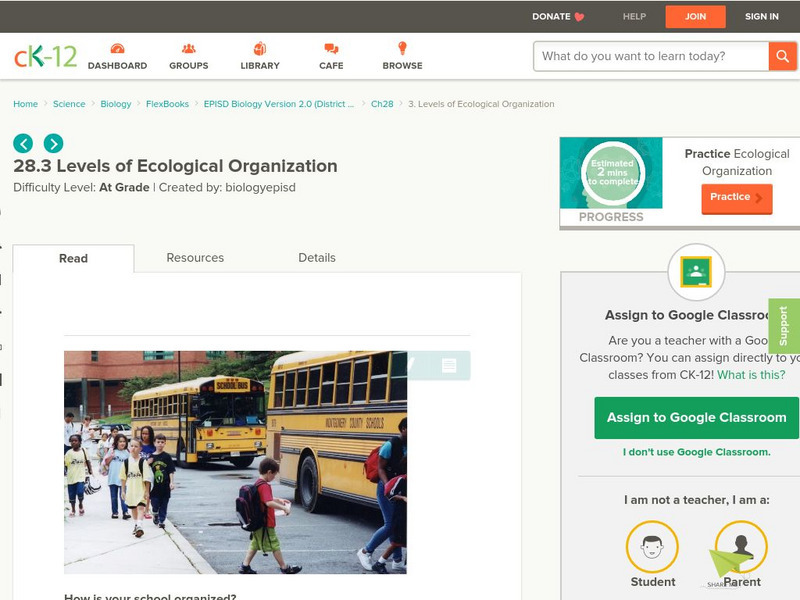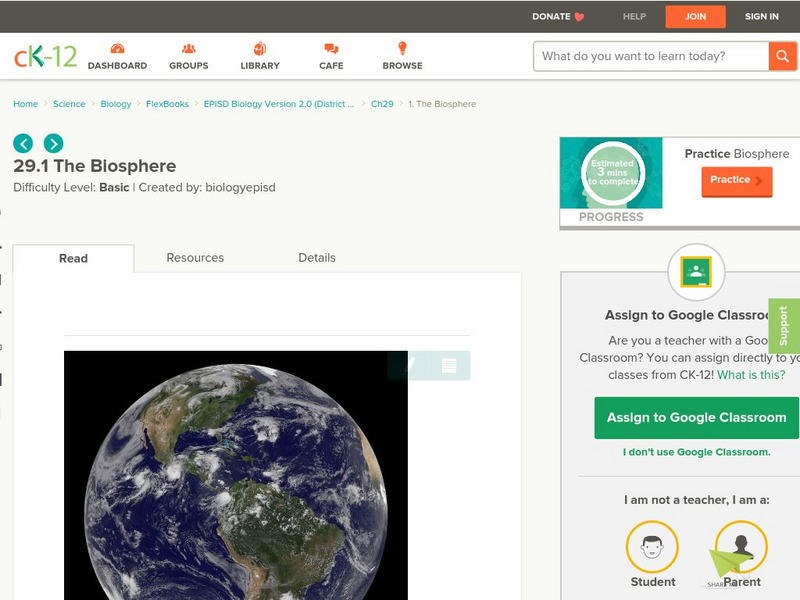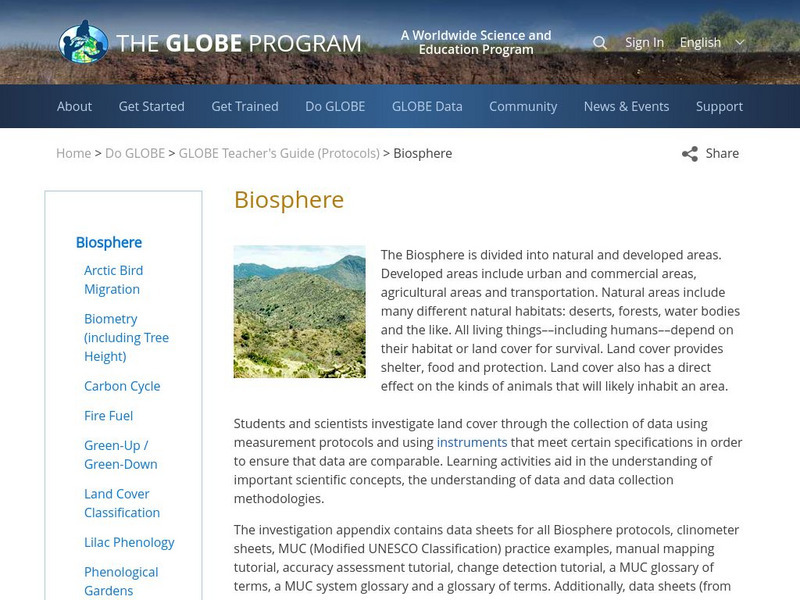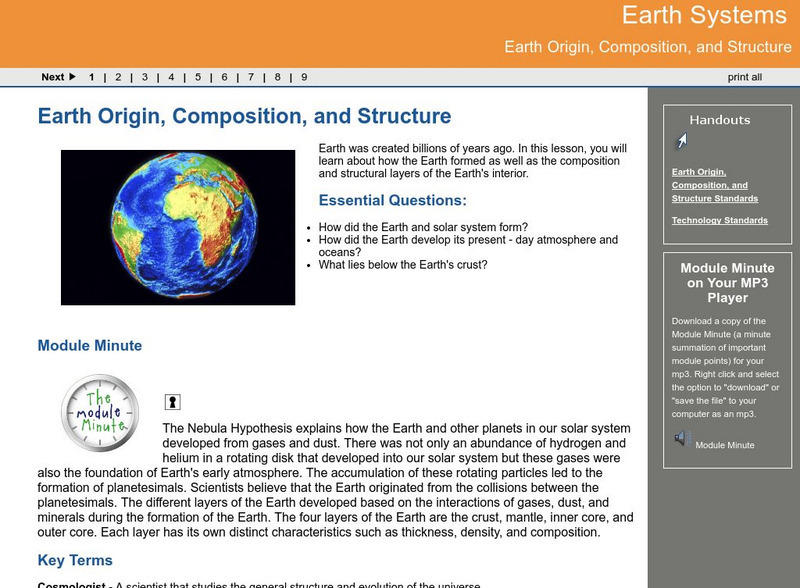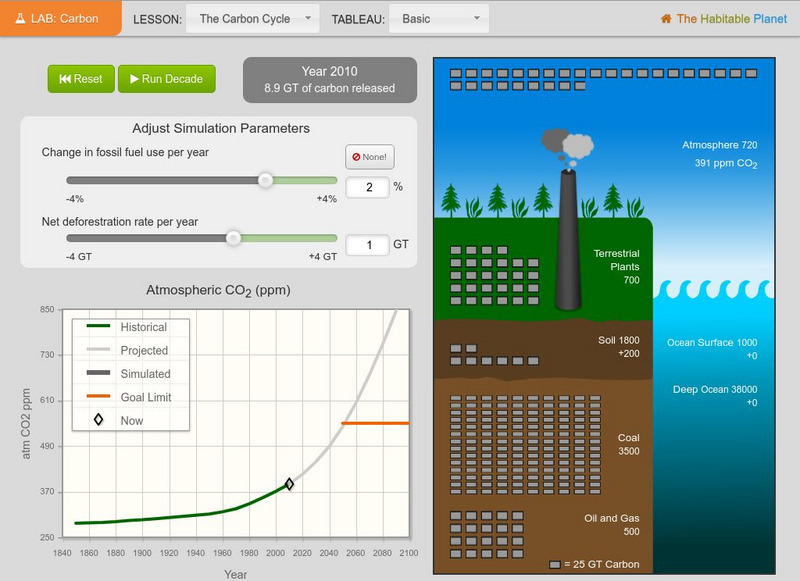Curated OER
Investigating the Biosphere With Planetary Models
Students create a biosphere using the computer program SImEarth. They work in small groups to create "Daisyworld" in which they model aspects of the Gaia hypothesis. They form a question to answer and choose variables to investigate in...
Alabama Learning Exchange
It's a Small, Small World
Students compare and contrast the different characteristics of animal-like, plant-like, and fungus-like protists. They list examples and describe the characteristics shared by the three protist groups. They create a brochure or slideshow...
Curated OER
The Rainforest Community
Students create a miniature rainforest ecosystem, a terrarium. Students then explain how the continuous flow of energy and food in the ecosystem allows it to sustain itself.
Curated OER
Earth's Ecosystem: Seven Major Biomes
Students discuss the different types of ecosystems and the composition of biomes. Working in groups, they define various related terms and make posters of them. Then they explain their posters to the class.
Curated OER
Ecology Test Word Search
For this earth science worksheet, students locate and identify various vocabulary terms related to earth science. There are 19 words located in the puzzle.
Curated OER
Salmon Smolt: Stella PC and Mac
Students investigate the Stella Smolts Migration Model and its use in previous simulation models to help managers deal with the many factors contributing smolts decline. They participate in an interactive exercise in the role of fishery...
Curated OER
Daisyworld: Interactive On-line PC and Mac
Young scholars use a JAVA interface to explore the Daisy World model to illustrate a mechanism through which - according to the Gaian hypothesis - biota might optimize their abiotic environment by means of negative feedback.
Curated OER
Investigating the Biosphere with Planetary Models
Learners model the biosphere and manipulate variables affecting change and plan their experiments with the help of others. They describe their question, hypothesis, and methods of investigation.
Curated OER
Environment: Understanding Change
Students predict changes that will occur in the environemt after trees are cut down around a house. They focus on changes in the hydrosphere, geosphere, biosphere, and atmosphere. By examining the rings in a tree's trunk, they...
Curated OER
Alaska's Physical Systems and History
Learners read about Alaska's physical systems and determine how Alaska's physical makeup has impacted its history. They create timelines of their particular physical system.
Science Buddies
Science Buddies: Growing a Soil Menagerie
Everything on our planet is linked by a giant recycling system called the biogeochemical cycle. How our planet recycles and reuses everything we need to support life is explained by making a miniature biosphere in this lab. You will also...
US Geological Survey
U.s. Geological Survey: Volcanoes
Six-part interdisciplinary teaching packet. Through the story of the 1980 eruption of Mount St. Helens, students will answer fundamental questions about volcanoes. By learning about volcanoes, students will understand that the Earth...
Globe
The Globe Program: Biosphere
A learning guide about the biosphere. Includes information about the National Science Education Standards. Requires Adobe Reader [PDF].
Other
Interactions Between the Atmosphere & Hydrosphere [Pdf]
A discussion of the interactions between the four spheres of Earth and how they affect weather and climate. The slideshow is divided into two parts. The first deals with interactions between the atmosphere and the hydrosphere and the...
CK-12 Foundation
Ck 12: Episd: Levels of Ecological Organization
[Free Registration/Login may be required to access all resource tools.] Discover the hierarchal system found in the biosphere which helps scientists break down and delve into different aspects of ecology.
CK-12 Foundation
Ck 12: Episd: The Biosphere
[Free Registration/Login may be required to access all resource tools.] Earth's biosphere is introduced to demonstrate what the Gaia Theory does for the environment. Students will also understand what homeostasis is.
Globe
The Globe Program: Biosphere
Website from Global Learning and Observations to Benefit the Environment (GLOBE) Program with comprehensive learning and field study resources on the biosphere in which students use materials and data to make observations and learn about...
Science Education Resource Center at Carleton College
Serc: Lab 1: Think Globally: Act Locally
A lab experiment in a series of experiments that explores Earth Science Systems. This lab introduces students to the parts of the Earth system: the atmosphere, hydrosphere, biosphere, and pedosphere. As the students learn about the...
American Geosciences Institute
American Geosciences Institute: Earth Science Week
This site includes learning resources and activities for Earth Science Week 2016. The goal of the week is to "engage young people and others in exploring geoheritage throughout the Earth systems, including the geosphere, hydrosphere,...
Georgia Department of Education
Ga Virtual Learning: Earth Origin, Composition, and Structure
In this lesson, you will learn about how the Earth formed as well as the composition and structural layers of the Earth's interior.
TeachEngineering
Teach Engineering: Population Density: How Much Space Do You Have?
Students learn about population density within environments and ecosystems. They determine the density of a population and think about why population density and distribution information is useful to engineers for city planning and...
TeachEngineering
Teach Engineering: Biodomes
Students explore the biosphere's environments and ecosystems, learning along the way about the plants, animals, resources and natural cycles of our planet. Over the course of lessons 2-6, students use their growing understanding of...
Other
Southwest Nova Biosphere Reserve
The Southwest Nova Biosphere Reserve is a UNESCO designated site in Nova Scotia. This page provides information on conservation efforts and research being done there.
Annenberg Foundation
Annenberg Learner: Carbon Lab
This lab uses a robust model of the carbon cycle to give an intuitive sense for how carbon circulates through the atmosphere, biosphere, oceans, and crust.








